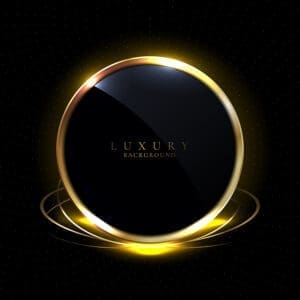
One of the most undervalued and underutilized marketing tactics is public relations (a.k.a. PR). This is most likely because most people — my immediate family included — have no idea what PR is.
“No Grandma, I don’t work at the TV station. And no, I can’t introduce you to Anderson Cooper.”
Even some small business owners who are familiar with PR are belaboring under very common myths about the industry. In this article, I’ve debunked the top five most common PR myths to show you how it can help you to market your hospitality business more effectively.
Myth #1: PR equals press releases
The press release is the proverbial hammer of a PR toolkit — the tried and true method that companies continue to use to communicate their stories to media. It can be a very effective tool, but only when used properly. Unfortunately, most companies use press releases as a vehicle to mass-market a story idea. Most press releases simply state news, rather than considering what is newsworthy (about the news) to the general public or a media outlet. Instead, always try to see the bigger picture; your press release should tell a reporter what implication your news has on the entire hospitality industry, not just on your company.
As well, companies that are inexperienced in PR send their untargeted press release to every single media outlet that they can think of and every single journalist in each outlet, without any real strategy or consideration of the journalist’s specific areas of interest. This “spray and pray” method has made the press release a much less effective tool for PR professionals. Journalists receive hundreds or even thousands of press releases via email every day so your message to media must also change for your story to stand out from the crowd.
Today, a more effective way of delivering your message/story idea to media is to use a pitch letter. A pitch letter is an email, which outlines the newsworthy story behind your news. I repeat, it cannot just state your news; your pitch must encapsulate why this story should matter to the media outlet’s audience.
Here’s an example: if your news is that your company appointed a new CEO, consider how this appointment will affect your business, the industry in which you operate and the local business community. Will your new CEO affect your local economy in a positive way? Will the new CEO bring strong experience or innovation that will help your company to transform your industry? If so, these are the strong newsworthy stories that you should be including in your email pitch, so that you will secure the most media coverage possible.
Myth #2: Effective PR can replace the efforts of a sales team
At times, I feel like I am stuck on repeat because of how often I explain this common misconception about PR: PR is not a sales tactic. It will not directly generate sales.
PR is a complement to a strong sales strategy, as it generates brand awareness and credibility so that when your salespeople approach potential leads, they are already familiar with your company, product and trust in your brand. This will turn cold leads into warm leads, and will drastically increase your sales team’s efficacy over time.
Which brings me to my next point…
Myth #3: Using PR, my company will become famous overnight
Building a brand and creating awareness in a customer’s mind does not happen overnight. With most PR campaigns (especially those in high competition markets — like the U.S. travel media market, for instance), companies can expect to start seeing media placements at approximately three months into the campaign; as long as the campaign continues, the number of PR placements will increase exponentially so you can anticipate steady growth over time.
This is why PR is most effective over a long period of time. My recommendation is to consider PR as a basic necessity for marketing your business and outreach should continue on a regular basis, as long as your company is in existence. In other words, PR shouldn’t stop until you do.
Myth #4: PR is cheap
A common misconception is that PR is cheap. While this has a modicum of truth (because PR is much cheaper — and more effective — than advertising), PR is not by any means cheap. PR is a full-time job so companies must either hire a full-time, in-house PR professional or outsource to an agency, who will handle the PR outreach on a company’s behalf. Either way, your monthly costs will be in the thousands, not in the hundreds of dollars. When it comes to PR, you definitely get what you pay for.
Think of it this way: you need to spend money to make money. And the benefits of PR HUGELY outweigh its costs. PR can create more visibility, more credibility and more impressions than advertising at a MUCH lower price point. And unlike advertising, whose effectiveness stops when you stop paying for the ad, PR’s reach continues to grow exponentially over time as more and more media outlets become familiar with your company, product and brand.
Myth #5: PR is all about press releases. Anyone can do it!
This is probably one of the biggest myths about PR. Many business owners think that they can handle PR themselves to save money; after all, all you need to do is write a press release and journalists will be banging down your door, asking for interviews, right?
Not true.
PR is a big job. It’s not just about press releases… or even about pitches. PR is about creating a consistent brand, writing well, communicating effectively, acting strategically, creating relationships with media, having extensive knowledge about your industry and the media outlets that you are pitching. That being said, it is possible to DIY your company’s PR with the right knowledge, guidance and tools, as long as you are willing to put in the time and work necessary to execute an effective ongoing PR campaign (at least, a few hours each week).


















